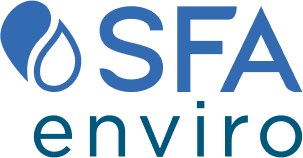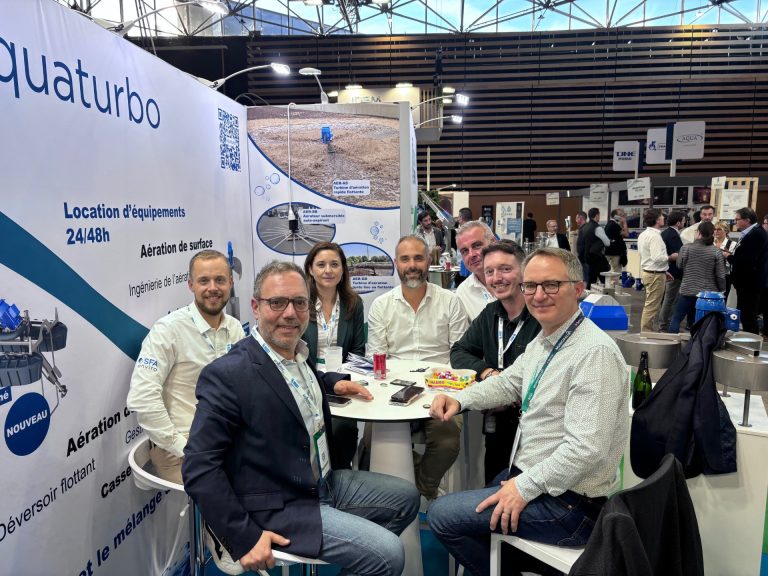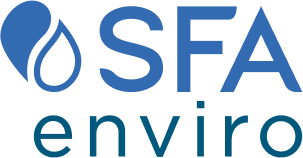In a wastewater treatment plant, a methanization unit, or a slurry treatment site, the presence of odors is never insignificant. Odor emissions are often the first indicator of a biological imbalance or a treatment malfunction: insufficient aeration, organic overload, poor mixing, or uncontrolled fermentation.
Odor nuisances, often perceived as subjective, are in fact relevant indicators of localized atmospheric pollution. Their analysis provides valuable insight into the odor emissions of a wastewater treatment facility, as well as their dispersion, perceived intensity, and social acceptability.
Yet these early warning signs are often ignored or detected too late—when complaints from residents accumulate, intervention costs increase, or environmental discharges become critical.
A comprehensive solution: ISPIRA & SFA enviro
To address this issue, SFA enviro and ISPIRA have joined forces in a strategic partnership. Together, they offer a complete approach that combines intelligent odor monitoring with targeted actions on the aeration process.
Thanks to its recognized expertise in olfactory diagnostics and odor compound analysis, ISPIRA applies a rigorous, multi-scale methodology to assist operators in managing odor emissions.
Their interventions are based on high-precision combined methodologies:
- Standardized olfactometric sampling conducted on-site using specific bags and following EN 13725 protocols;
- Laboratory analysis in certified facilities using olfactometric panels or instrumental techniques such as GC-MS-O (gas chromatography with olfactory detection).
Atmospheric modeling that incorporates local topography, meteorology, and emission sources to simulate odor dispersion and anticipate how it will be perceived by nearby residents.
In parallel, treatment plants can be equipped with networks of connected sensors that continuously measure odor compounds (VOCs, H₂S, NH₃). These next-generation sensors transmit real-time data, facilitating:
- Rapid identification of emission peaks;
- Precise localization of odor sources;
- Immediate reaction when critical thresholds are exceeded, both in preventive and emergency management.
This dynamic monitoring, cross-referenced with olfactometric data, enables detailed mapping of emission zones, optimization of airflow processes, and implementation of targeted source-level odor reduction actions. Beyond regulatory controls, it provides a lever for complying with environmental authority expectations and restoring trust with local communities.
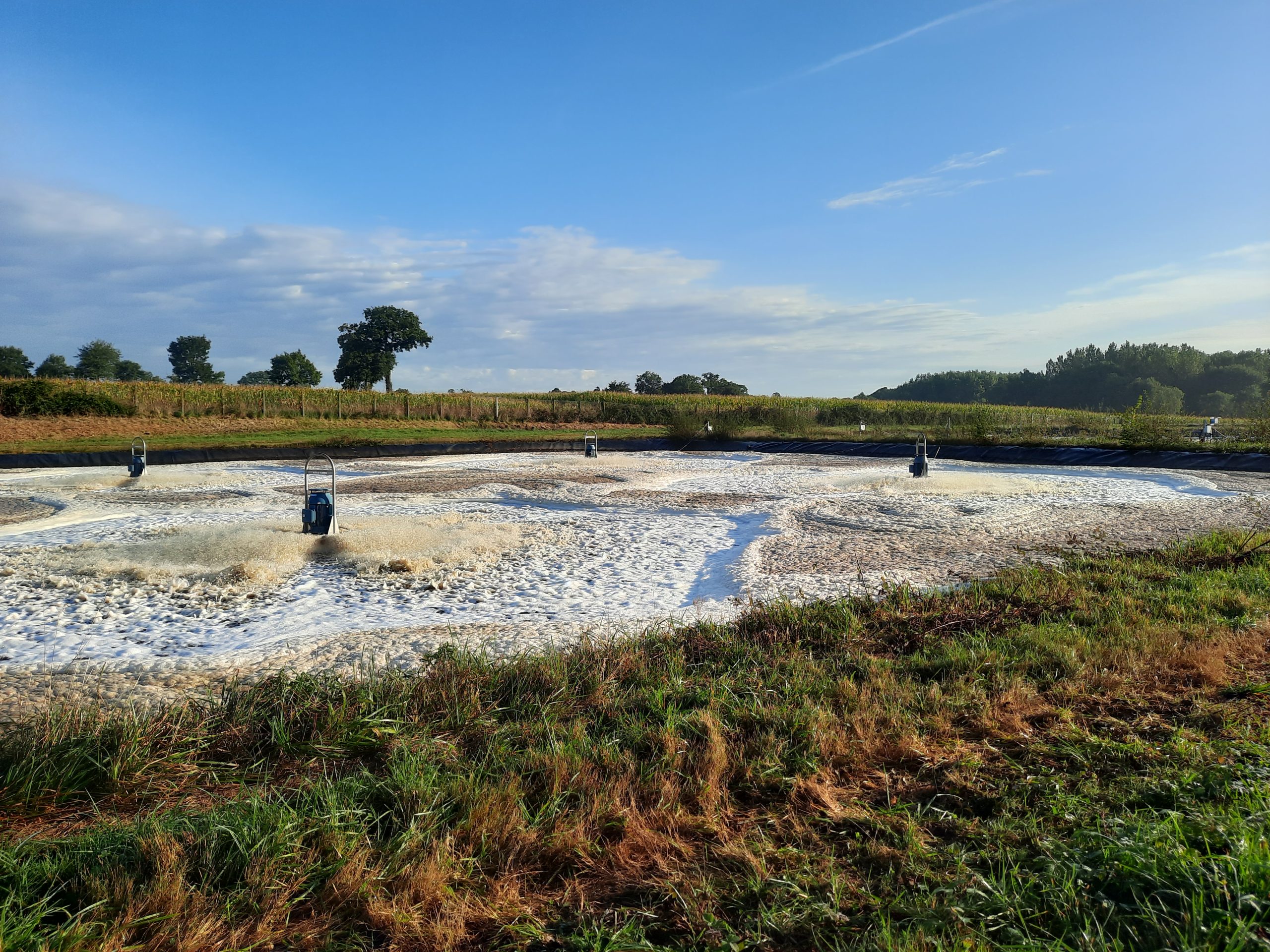
Figure 1 – Four 30 kW high-speed surface aerators Aquaturbo AER-AS installed in a lagoon in western France – Emergency aeration system consisting of four 30 kW high-speed turbines deployed in a biological lagoon in western France. This high-power temporary installation is designed to restore oxygen balance in the event of hydraulic or organic overload. The mobile solution, implemented by SFA Enviro, enhances oxygen transfer in biological basins and helps limit the formation of odorant compounds such as VOCs, H₂S, and NH₃. By reinforcing the efficiency of aerobic treatment processes, this system provides an immediate reduction in odor nuisances and fully supports the odor management strategies in wastewater treatment plants developed by Ispira.
Technical and operational optimization by SFA enviro
At the heart of aerobic biological processes, SFA enviro acts as an expert partner to ensure the long-term performance of wastewater treatment systems. The company provides a thorough technical review of the aeration system, analyzing in detail the essential parameters that influence biological treatment efficiency and odor control.
Each intervention begins with a precise evaluation of aeration times, mixing, equipment sizing (air diffusers, surface aerators, blowers, injection systems), accounting for basin configuration (step-feed, sequential, carousel, etc.) and nitrification or denitrification objectives. This comprehensive approach identifies weaknesses in the process, corrects imbalances, and reduces the formation of odorous compounds—often linked to low dissolved oxygen or poor flow distribution.
In addition to diagnostic and optimization missions, SFA enviro offers reactive solutions in emergencies: in cases of hydraulic or organic overload, equipment failure, or scheduled maintenance, the company can quickly deploy a fleet of rental high-speed surface aerators and temporary mixers. These units, available in various power ratings and configurations, can be installed without interrupting operations, maintaining treatment performance while avoiding overflows or odor spikes.
If analysis reveals a weakness in aeration or mixing, SFA enviro can propose replacement of existing equipment with more efficient or better-suited machines.
The SFA enviro range includes all types of surface or submerged aeration systems—mechanical or fine-bubble—as well as floating or submerged mixing solutions. The expertise of SFA enviro’s engineers helps you choose the most appropriate technology for your application.
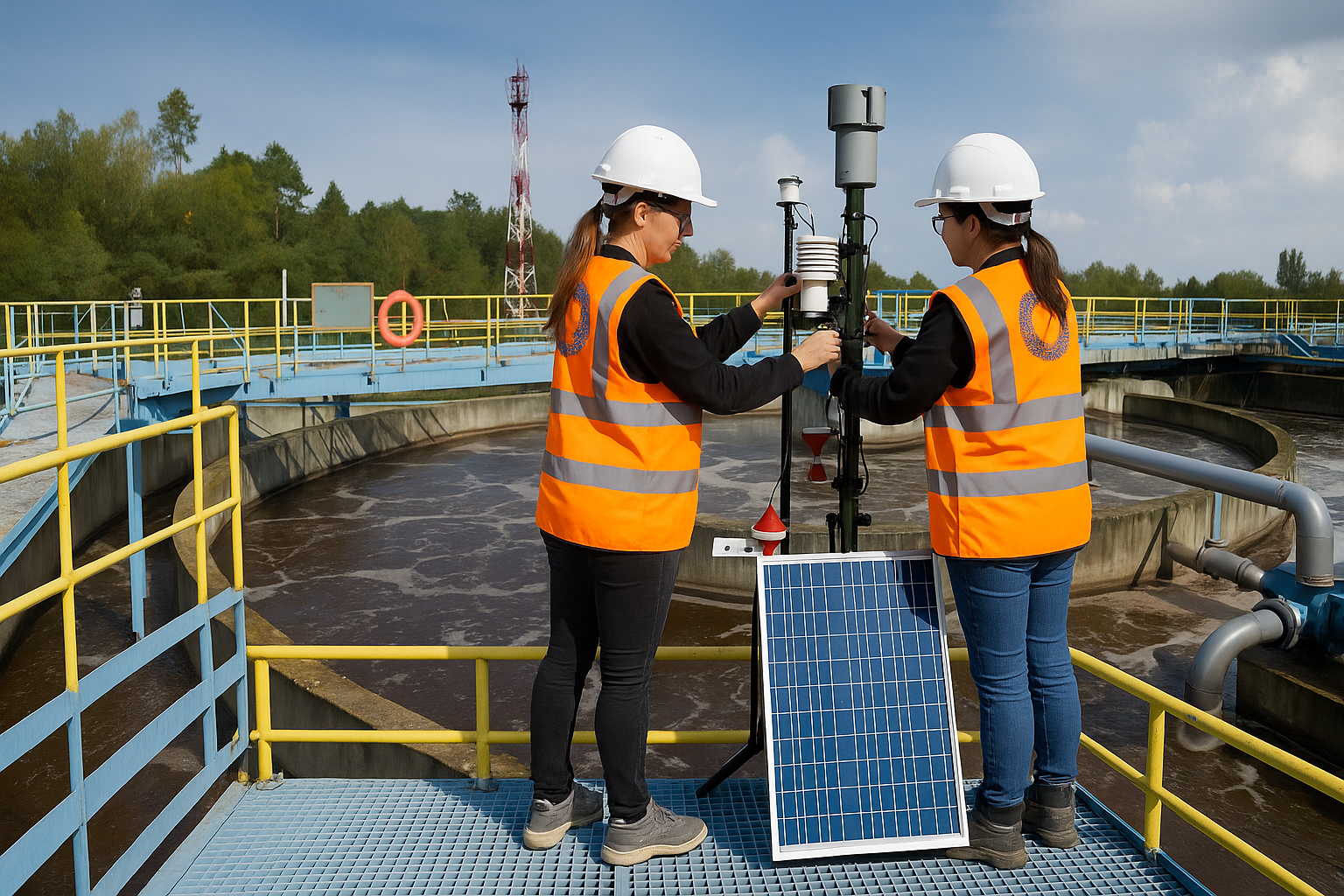
Figure 2 – Installation of an air pollutant and odor monitoring station at a wastewater treatment plant – On this technical platform, two operators are installing an environmental monitoring system equipped with microsensors for the continuous detection of volatile organic compounds (VOCs), hydrogen sulfide (H₂S), and ammonia (NH₃), powered autonomously by solar panels. This setup is part of a strategic partnership between SFA Enviro and Ispira, aimed at improving the control of odor emissions around effluent treatment sites. This innovative approach combines real-time smart monitoring, standardized olfactometric analysis, and odor dispersion modeling to support plant operators in optimizing their aeration processes and reducing odor nuisances at the source.
Thanks to this combined expertise, SFA enviro supports operators over the long term with proactive, efficient, and controlled management of their biological treatment facilities.
From Anticipation to Correction: An End-to-End Approach to Emission Management
The strategic partnership between ISPIRA and SFA enviro goes far beyond end-of-pipe air treatment. It delivers a proactive, systems-level approach to odor management in the wastewater treatment and waste recovery sectors.
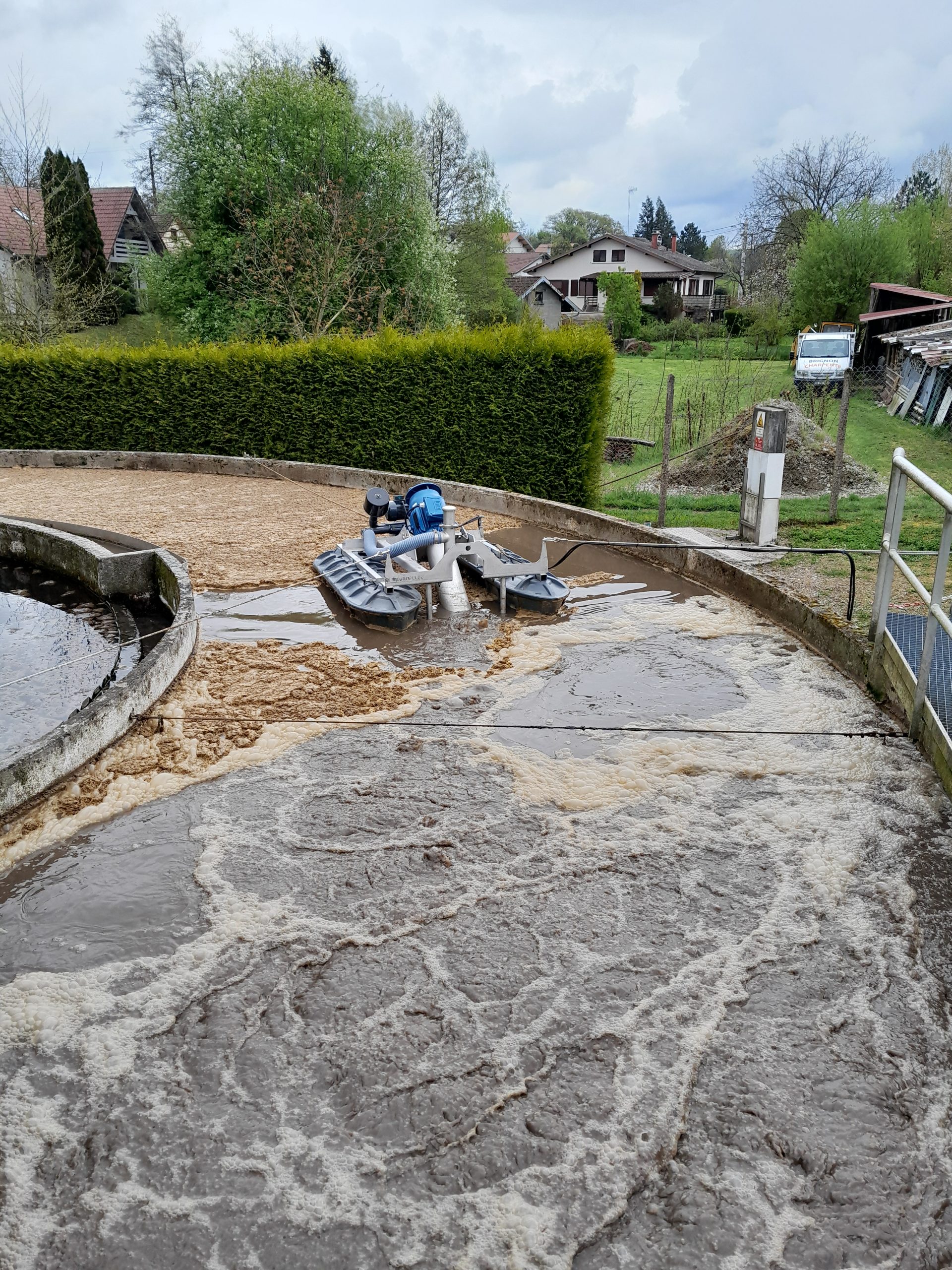
Figure 3 – Installation of an 11 kW inclined surface aerator Aquaeromix replacing a brush aerator in eastern France – Installation of an 11 kW directional surface aerator to replace a brush-type aerator at a wastewater treatment plant in eastern France. This technical solution was implemented to improve the efficiency of biological aeration and optimize oxygen transfer in the treatment basins. This type of aerator ensures controlled directional mixing, reducing dead zones and enhancing treatment homogeneity. The intervention, carried out as part of a joint Ispira–SFA Enviro audit, addressed a dissolved oxygen deficiency and helped limit the formation of malodorous compounds such as hydrogen sulfide and volatile nitrogen-based compounds. As a result, the air quality around the facility was improved, and regulatory compliance regarding odor emissions from wastewater treatment plants was reinforced.
By combining high-resolution olfactometric diagnostics with advanced process optimization of aerobic treatment, this collaboration empowers plant operators with actionable insights into odor emissions at every critical stage of the treatment chain.
The result: improved environmental performance, enhanced regulatory compliance, and measurable reductions in odor nuisances
This comprehensive system applies to a wide range of facilities: municipal wastewater treatment plants (WWTPs), industrial sites, methanization units, slurry treatment installations, leachate treatment centers, or composting platforms. In each context, the joint intervention of ISPIRA and SFA enviro helps anticipate performance imbalances, identify the source of emissions, and correct deviations—both in aeration parameters and in the management of polluting gas flows.
The major advantage of this approach lies in its ability to act directly at the source of nuisances by relying on:
- Smart connected sensors for continuous VOC, H₂S, and NH₃ monitoring;
- Atmospheric odor dispersion modeling;
- Performance analysis of aeration equipment;
- Rapid deployment of backup surface aerators in case of overload or failure.
This technical-operational synergy enables precise and responsive management of treatment processes while ensuring environmental compliance and reducing odor emissions.
Tangible, visible and measurable results
The joint ISPIRA – SFA enviro approach yields tangible short- and medium-term results, both environmentally and operationally. Key observed impacts include:
- Measurable reduction in odor emissions through precise source control and optimized aeration conditions;
- Significant reduction in on-site complaints and neighborhood grievances, indicating better odor management in sensitive zones;
- Prevention of non-compliant discharges by ensuring stable operation in line with regulatory standards, particularly regarding nitrogen compounds and organic loads;
- Energy consumption optimization enabled by fine-tuning aeration sequences and better matching of oxygen supply to biological demand.
Together, these actions enhance the reliability of the treatment process, improve traceability of environmental performance, and help improve the facility’s public and regulatory image. They are part of a reasoned, results-oriented, resilient, and regulation-compliant technical management strategy.
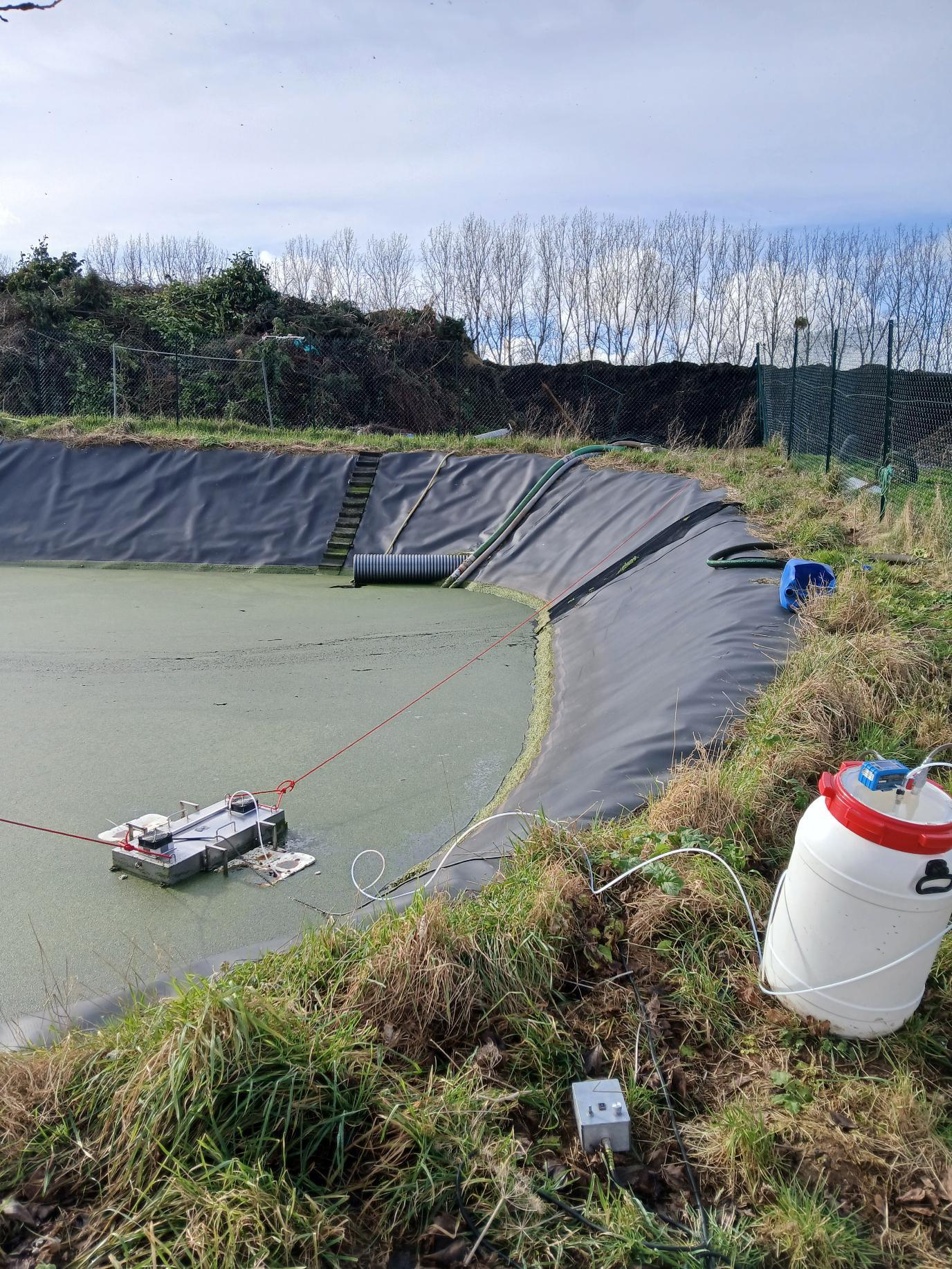
Figure 4 – Olfactometric sampling device installed over an odor-emitting liquid surface as part of an odor impact study – This system quantifies odor fluxes at the source by precisely controlling the airflow through a sampling enclosure. The odor-laden air, containing VOCs, hydrogen sulfide (H₂S), and ammonia (NH₃), is directed into sample bags in compliance with EN 13725. This methodology is employed by Ispira to characterize odor nuisances at wastewater treatment and waste recovery sites, enabling a rigorous assessment of emission sources and supporting the design of targeted mitigation strategies.




